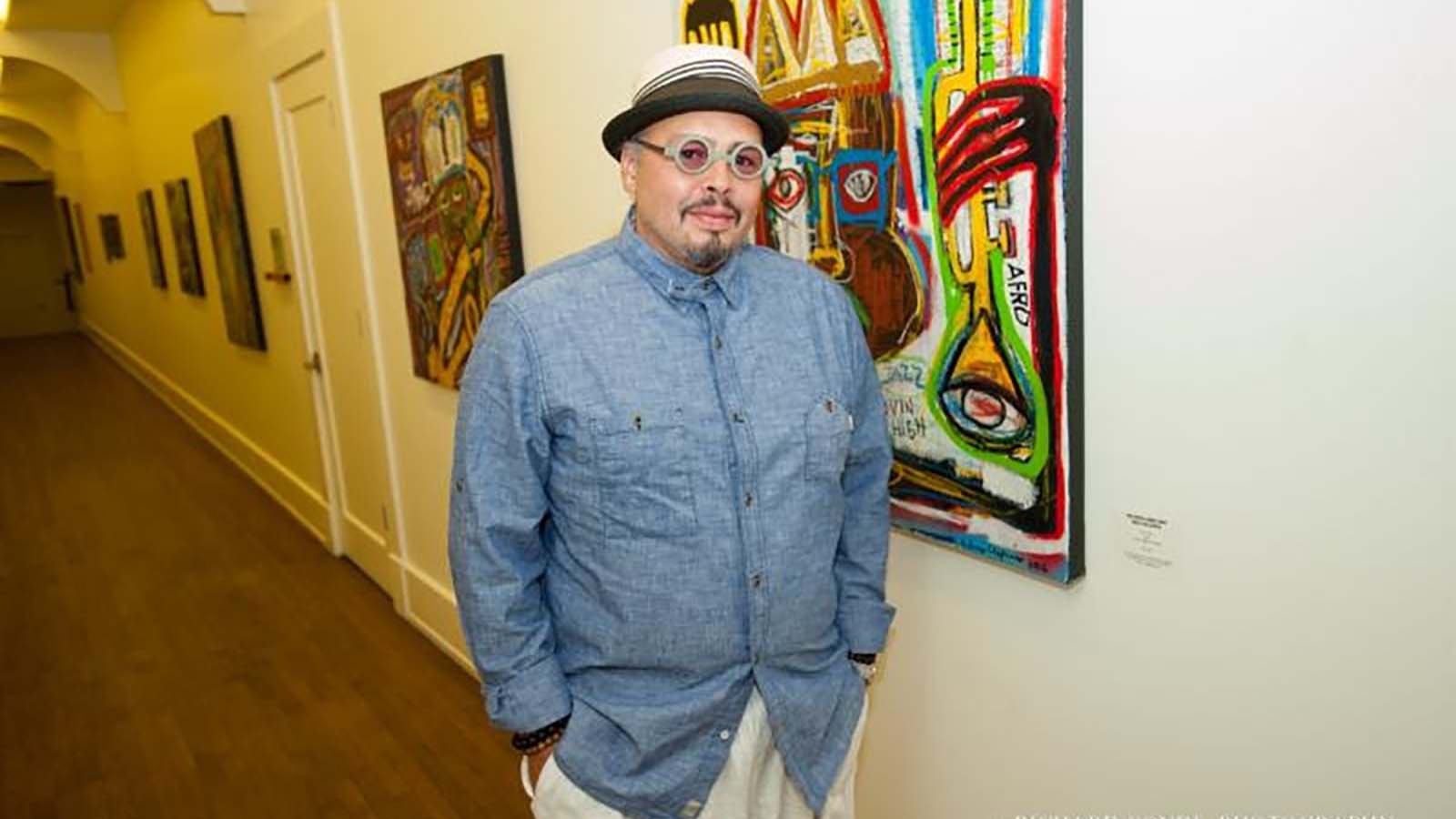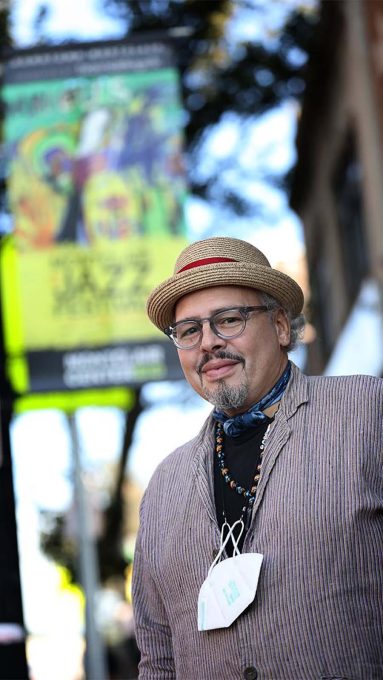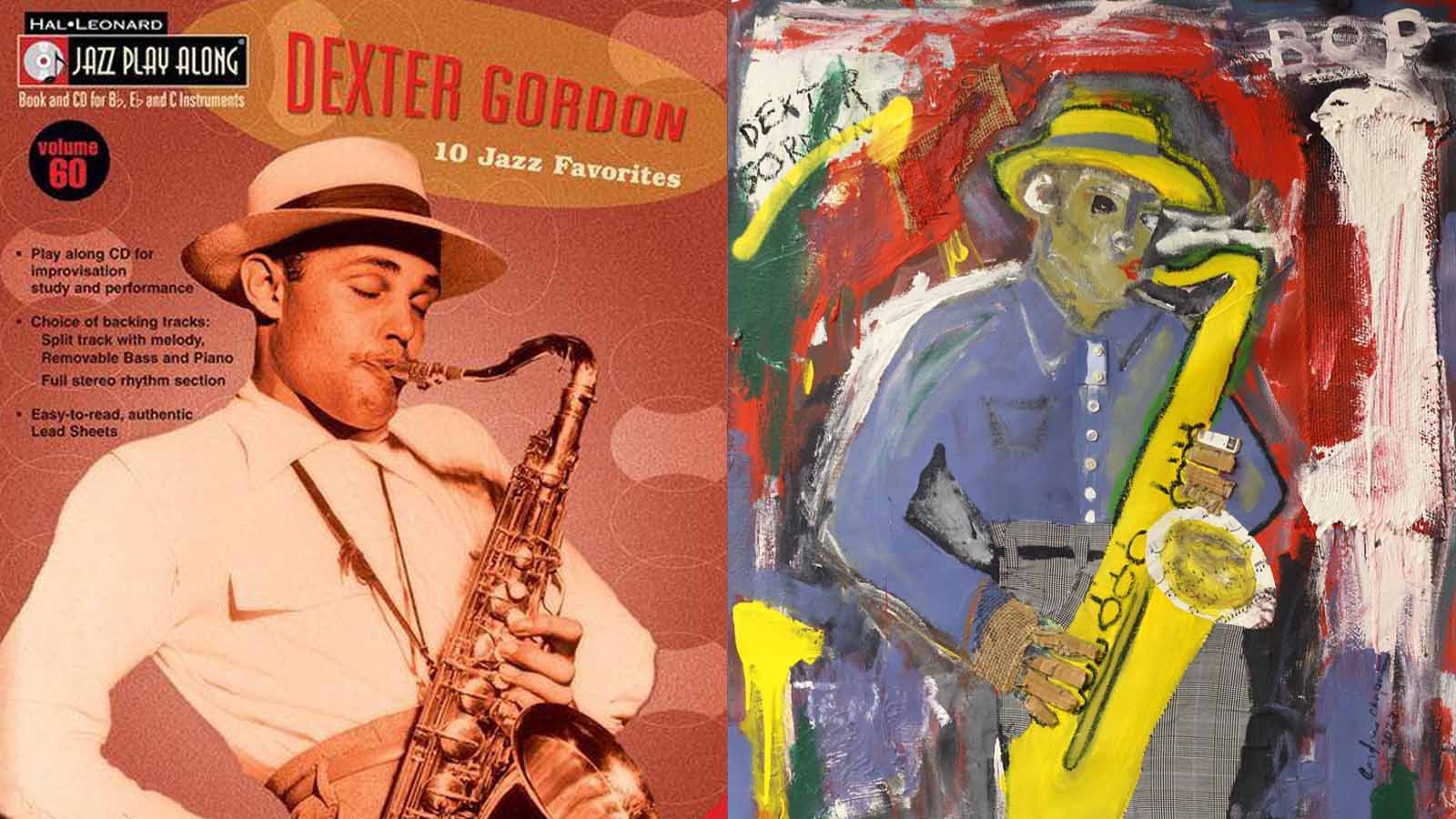DEXTER GORDON: 2023 MONTCLAIR JAZZ FESTIVAL CELEBRATED ARTIST
Dexter Gordon, who would have been 100 on February 27, is a true jazz icon. The influential tenor saxophonist was born and raised in Los Angeles and played clarinet and alto saxophone before settling, at 17 years old, on the instrument for which he would always be known. Nicknamed “Long Tall Dexter” because of his height (6’ 6”), Gordon was one of several horn players who came of age during the Big Band Era, but who would come to develop and define the Bebop Era, with its emphasis on small groups and improvisation by soloists. His saxophone sound was large and warm, continuing the tradition set by Lester Young but adding more creative exploration under the innovative influence of Charlie Parker. Gordon recorded nearly 100 albums as a leader during his long career, most notably for the Blue Note label, which also featured iconic covers that have become part of jazz history.
“What I’m doing, I prefer to call that jazz, because it is a beautiful word – I love it.”
Dexter Gordon
Unlike his contemporaries John Coltrane and Sonny Rollins, Gordon never really moved beyond the bebop genre, continuing to perform with hard-swinging rhythm sections throughout his career of more than four decades. Like many jazz artists from the bebop era, Gordon moved to Europe to perform and record during the beginning of the rock and soul era of the ‘60s, when straight ahead jazz seemed to fall out of favor. Although he had been coming back to the U.S. often, Columbia Records celebrated his official return in 1976 with a live album called Homecoming which re-introduced the saxophonist to a new generation of younger jazz fans. For the next 10 years, Gordon would perform at clubs and festivals often backed by stellar sidemen like George Cables, Ronnie Mathews, Rufus Reid, Louis Hayes and Eddie Gladden. Along with Art Blakey and Betty Carter, Gordon was a key factor in the resurgence of interest in straight-ahead jazz during the late ‘70s and early ‘80s.
Beset by emphysema towards the end of his career, Gordon would cut back on his live appearances, while at the same time he appeared as an actor in two films, Awakenings and Round Midnight. In the latter, he played a fictional expatriate jazz musician named Dale Turner based loosely on Bud Powell and Lester Young, but also incorporating various Dexter-isms, including his droll humor, languid sound and fascination for the lyrics of a song. Although not in good health at the time, Gordon’s performance in the film won him an Oscar nomination and acted as a bittersweet coda for one of the most distinctive saxophonists in modern jazz. Gordon died in 1990 at the age of 67.
JAZZ HOUSE KiDS is proud to unveil the art that pays tribute to the jazz great Dexter Gordon that will serve as the visual theme for the 2023 MONTCLAIR JAZZ FESTIVAL. As has been the case for the last nine years, the noted painter and collage artist Andres Chaparro is providing original artwork for the festival’s posters, banners, signs, t-shirts and other uses.

MONTCLAIR JAZZ FESTIVAL ARTIST IN RESIDENCE: ANDRES CHAPARRO
JAZZ HOUSE KiDS is proud to unveil the art that pays tribute to the jazz great Dexter Gordon that will serve as the visual theme for the 2023 MONTCLAIR JAZZ FESTIVAL. As has been the case for the last nine years, the noted painter and collage artist Andres Chaparro is providing original artwork for the festival’s posters, banners, signs, t-shirts and other uses.
A self-taught artist, Chaparro says that he’s never taken an art class in his life. Born and raised in the Hartford, Conn. area, Chaparro was 13 years old when he was turned on to jazz. “I heard ‘A Love Supreme’ on the radio and it was like being hit by lightning,” he explains. “I didn’t even know who it was or what it was. I couldn’t categorize it but I knew it was great music and I recall feeling elevated and inspired by it.” Not knowing if the album was old or new, he immediately went to a local record store and bought the seminal 1965 recording by John Coltrane. “Basically, that was the beginning. It started this incredible discovery and opened up the world to me. I started exploring from there.” He soon learned about Jackie McLean who lived and taught in that same city, as well as other jazz greats, many of whom he would pay tribute to in his art. Not surprisingly for a budding artist, he found himself buying albums because of the covers, leading to a lifelong affinity for releases from Blue Note Records, with its iconic graphics.
As a visual artist who works in both oil and multi-media collage formats, Chaparro counts Romare Bearden, Jean-Michel Basquiat and Benny Andrews as influences, though he cites jazz musicians for truly inspiring his work. Over the years, he’s created dozens of art pieces, which have been exhibited at galleries and museums, as well as in private collections. Among the jazz subjects for his art have been Bud Powell, Sonny Rollins, Miles Davis, Dizzy Gillespie, Rahsaan Roland Kirk, Charles Mingus, Nina Simone and Lee Morgan.

To create the art celebrating Gordon, Chaparro turned to the jazz legend’s music itself. “I basically just played his music and let the music speak to me,” he says. “I try to visualize what the music would look like. That’s my approach to my work. It was just following my heart.”
One of Chaparro’s signature approaches to his collage art is to include song titles or phrases within the piece. He’s even included newspaper clippings or sheet music as part of the visual mosaic for the artwork. His mixed media paintings incorporate collage, oil pastels, marker, crayon, pencil, acrylic, spray paint and found objects.
When asked how long a piece generally takes, Chaparro shrugs. “It varies, depending on how clearly I’m approaching the work or who it is. I finish it when I step back and I look at the painting and think, ‘I got nothing more to give it.’ Sometimes it takes two days. Sometimes it takes a week. Sometimes it takes two weeks. I have to work things out until I feel they speak to what I’m trying to convey.”
He says that he has a whole list of artists that he’s looking forward to painting, including many living artists. “I listen to music all the time and the music speaks to me. It makes me feel a certain way that I just need to create that musician.” Among the artists he’s looking forward to representing through his art are trumpeter Josh Evans, Sean Jones, Ron Carter, Al Foster and Pharoah Sanders.
One thing for sure, he’s certain not to run out of subjects for his art anytime soon. “I go where my heart tells me. I’ll be creating art pieces inspired by jazz until the end of my days. And I still wouldn’t have hit them all.”


